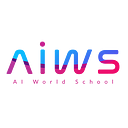The Role of AI in the Art World: How It’s Changing the Face of Contemporary Art
The art world is no stranger to innovation. From new media and computer-generated imagery in the 1980s to virtual reality, big data, and artificial intelligence today, the art world continues to be reimagined and reinvented. These advancements open up new doors for artists and change how we view their work, from the buying process to discovering new artists. With AI technology increasingly permeating every corner of our lives, it should come as no surprise that it has begun to infiltrate the visual arts as well. The role AI plays in this sector can vary widely depending on one’s interpretation of what AI actually is — whether it’s a set of algorithms designed to mimic human behavior or an independent entity with its own consciousness.
What is AI?
AI is the acronym for artificial intelligence. It’s a type of computer system that uses algorithms and data to complete specific tasks. AI can perform tasks like speech recognition, image recognition, and learning. AI is also used in robotics to control movements and in self-driving cars to detect objects on the road. There are many different types of AI, but they all have one thing in common: they use sensors to collect information and then process it using algorithms. AI isn’t just about computers solving complex problems. It’s also about creating solutions that make people’s lives easier and safer. Its recent evolution has led to stepping its foot on creating artworks like painting and music etc.
But does this creation can be considered creative as what humans conceive as ‘creativity’. Before knowing how AI is impacting the world, one should be familiar with the basics of AI to understand its impact. AI world school is providing advanced AI and coding courses which are crucial for a successful career for today’s young generation. Try a free trial class at AI World School to get your child started on a successful career path.
AI’s recent possibilities were the stuff of science fiction a century ago. An artificial intelligence may be able to trick a human into thinking a poem, painting, etc., was written by a human, but that doesn’t mean the piece of “creative art” is meaningful. AI can produce an endless number of outputs based on what you input, but it won’t understand them. However, it will play a predominant role in the future of art.
AI in the Art World: Where Is It Now?
AI is all over the art world. From algorithms that can correctly identify the style of an artist to AI-powered digital painting apps, AI has found its way into many different fields. Most recently, AI has started to find its way into art. Some companies have created AI-powered assistants that can help artists with tasks like managing their portfolios and scheduling appointments. In addition, some artists have started using AI to create works of art themselves. As AI continues to evolve and grow in the art world, let’s take a look at what it means for the future of the art world.
DALL-E is an OpenAI that creates original, realistic images and art with text description and is also capable of combining attributes, concepts, and styles
Let’s take a look at the images created by DALL.E
These images created by DALL.E can represent how art is perceived by AI. Even though, now, it requires human input to create art, it is not a distant future for AI to produce a complete autonomous ‘Art’ according to its own definition of “creativity”.
AI and the Art Industry: Ethics and Transparency Concerns
The Art and Artificial Intelligence (AI) industry is gaining attention as a result of the introduction of new AI-generated artworks. While some believe this will lead to the democratization of art, others are concerned that it could result in manipulation or misrepresentation. In order to ensure ethical practices in AI-assisted art production, there are several ways that AI can be utilized to improve transparency. First, research should be conducted into the use of machine learning algorithms. Second, viewer surveys should be conducted to gauge public perception of AI-generated art. Third, transparent processes such as daily curation and peer review should be implemented. Fourth, copyright laws should be updated to include AI-generated works. While these strategies will not guarantee ethical practices in AI-assisted art production, they will increase transparency and foster trust between artists and the public.
Conclusion
AI in the Art World has a number of benefits for art, from creating new kinds of works to being more affordable and accessible. AI is also being used to enhance the human experience of art through techniques like human-to-AI translation and AI-assisted curation. If AI continues to evolve and grow, it will have a profound impact on the art world as we know it. There won’t be a field in the future without the use of Artificial Intelligence which makes it essential for today’s kids to learn AI and essential skills like coding and robotics. AI World School teaches coding in a way no other school can. We use a self-paced curriculum with expert coders who have been training kids to code for years. This means you’ll learn more and faster!
It is never too late to get started with coding.
So, what are you waiting for?
Start your child’s journey today and help them build the skills they need to become the next generation of creators. Start your free trial at AI world school
